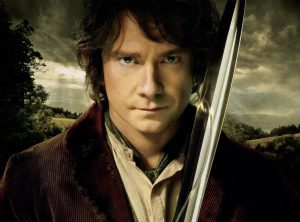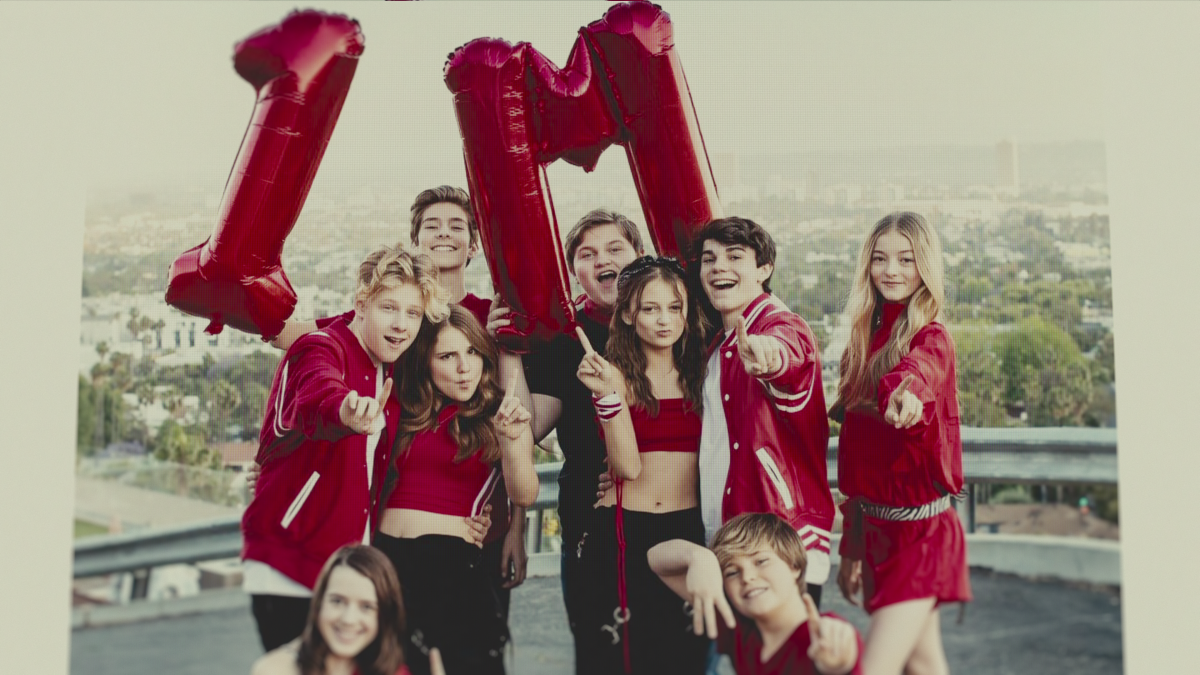
All good things must come to an end, and two years and three films later, The Hobbit franchise has come to an epic conclusion with the release of The Hobbit: The Battle of the Five Armies. Previously titled There and Back Again, the film’s name was changed in April 2014 when director Peter Jackson reasoned that the title “The Battle of the Five Armies” truly captured the essence of the film. BOTFA supplies the most connections to the Lord of the Rings; however, the film’s sloppy and rushed ending leaves some questions unanswered, making it one of the weaker installments of the trilogy.
The movie begins with the continuation of The Desolation of Smaug’s suspenseful ending when the dragon Smaug (Benedict Cumberbatch) burns down Laketown, a small village in the vicinity of Smaug’s former home, Erebor. Following Laketown’s destruction, the survivors, led by Bard (Luke Evans), hope to seek refuge in Erebor and Mirkwood Elven King Thranduil expresses an interest in the mountain as well. Drawn to the immense riches of the mountain, men and elves wish to have a share in the dwarves’ claim; however, corrupted by ‘dragon sickness’, Thorin refuses to share. While these three groups are on the brink of war, the armies of orcs led by Azog (Manu Bennett) plan to ambush the men, dwarves, and elves to take over Erebor for themselves.
Jackson tried to meet the demands for a shorter film by making BOTFA only two hours and twenty-four minutes long; more than half an hour shorter than the trilogy’s first and second film; however this change leaves BOTFA’s ending seem rushed and unfinished. Following the major battle, the film focuses entirely on Bilbo’s journey back home in the Shire and does not address at all the fate of Erebor, the dwarves, men, and elves. The most obvious victim of the film’s pressed conclusion is Tauriel. Since Tauriel is a character created out of the imaginations of screenwriters rather than Tolkien himself and does not appear in any of the Lord of the Rings films, BOTFA should have explained in more depth her fate. Last seen in the film grieving over a loss of a loved one, the film roughly transitions to Bilbo’s return to the Shire without any other explanation as to what actually happened to Tauriel after that. Therefore, she is not integrated seamlessly in the films as much as she should have. The film’s rushed ending, combined with several over the top CGI moments and ill-timed humor contribute to the film’s overall shaky portrayal of The Hobbit’s closure.
Other than the final twenty minutes of the film, BOTFA does boast some improvements since the first and second installments. In terms of plot, BOTFA has the most action out the three films between Smaug’s demise, the battle for the mountain, and the rise of Sauron. Also, BOTFA seamlessly ties with the Lord of the Rings with subtle references such as Legolas’ mission to find Aragorn, the rightful heir of Isildur and the anticipated appearance of Sauron.
Now that Tolkien movie adaptations will no longer grace big screens, there is one question left on everyone’s mind. Did The Hobbit, a three hundred and sixty five page book, need a movie adaptation that spanned three entire installments? The first aspect that moviegoers and critics alike tend to scrutinize is the length of each of these films. Everyone who has watched a movie in the Lord of the Rings franchise would know that Jackson’s beloved installments are by no means short and sweet. Averaging a whopping three hours in duration, watching a Hobbit film takes a significant amount of time out of one’s day.
As a result, screenwriters created entirely new characters not seen in the book. In turn, the characters were only developed to retain an audience’s attention. For example, elf warrior Tauriel was not an initial character in Tolkien’s written story. Despite that Evangeline Lilly portrays her as a strong female individual, she does serve in a love triangle with fellow elf Legolas and dwarf Kili. However, her addition adds more dynamics to a cast that’s predominately male. Despite the controversy, Jackson’s decision to include Tauriel in the cast proves to be successful in that her unfamiliarity to book lovers adds unpredictability in an otherwise slow and uneventful storyline.
Moreover, since the plot is stretched out, the plots of An Unexpected Journey and The Desolation of Smaug do not have much progression. For example, as misleading as it sounds, The Desolation of Smaug does not include Smaug’s demise and he is finally killed within the first five minutes of BOFTA. Overall, the decision to continue The Hobbit storyline for three installments presented challenges to create engaging and action-filled films because sometimes, there is simply not enough story to fill three films.
Although the franchise has its fair share of criticisms and controversies, Jackson’s risk to stretch the plot of into three films is largely an accomplishment. The characters had better development due to their extended screentime. For example, one of the most dynamic character portrayals throughout the trilogy is hobbit Bilbo Baggins. Throughout the franchise, Bilbo battles between maintaining virtuous and succumbing to the corruption of the Ring he found in An Unexpected Journey. Had his story been limited to one film, audiences would not have seen nearly as much of Bilbo’s progression as they can with three movies. In addition, more screen time means that screenwriters could incorporate book details into the films. The Desolation of Smaug diverged into two different plots: the main plot with Bilbo and Thorin’s dwarvish company and the subplot with Gandalf and his battle with the Necromancer; a detail in the book. By choosing to include the subplot, The Hobbit films tie closely with The Lord of the Rings, for the Necromancer is revealed as Sauron, the main antagonist.
The Hobbit franchise is a celebration of Tolkien’s beloved book and Jackson makes sure that every film has many intricate details that honor it. On the other hand, critics believe that the franchise is a simple money scheme that aspired too much to match the triumphs of the Lord of the Rings. But as a whole, the filmmakers succeeded in creating a trilogy that honors Tolkien’s book to the best of its abilities, and the faithfulness to the book may have been compromised if the writers tried to fit the story into a single film. So despite criticisms by the casual moviegoer, the Hobbit franchise is a gift to Tolkien’s loyal readers due to its strong adherence to the original work.








